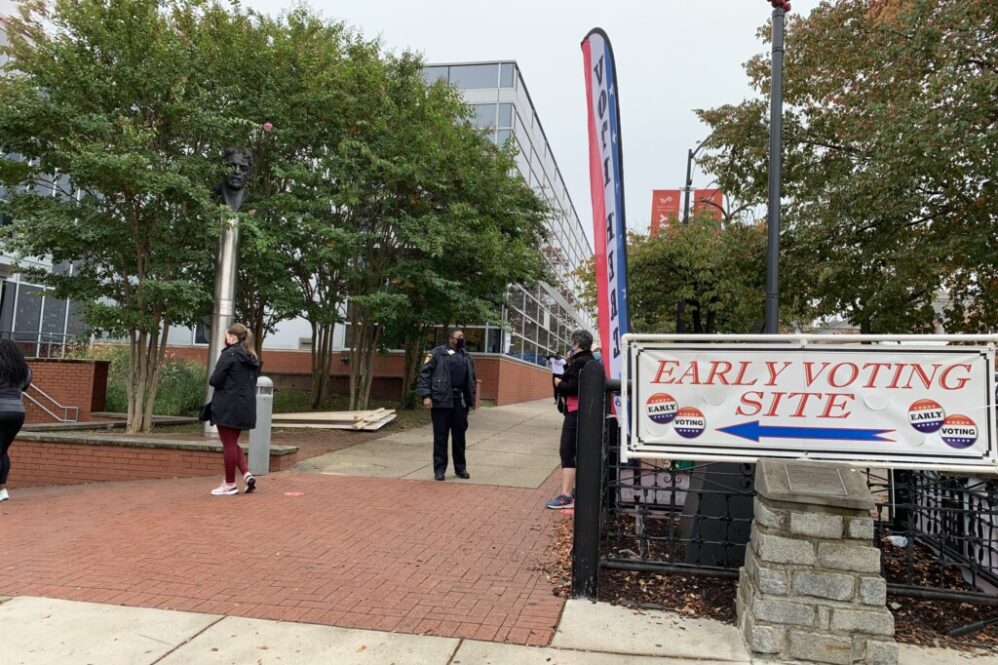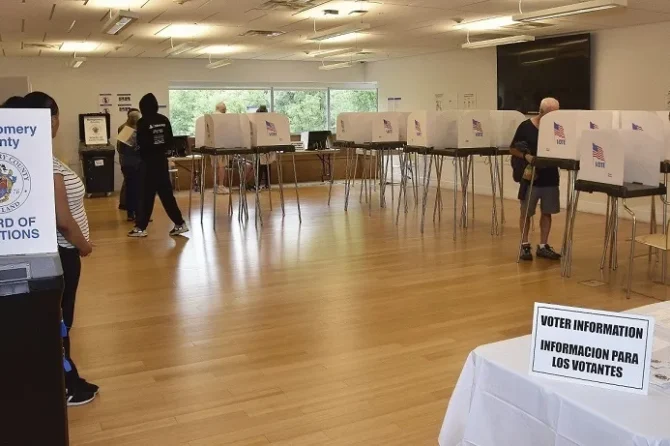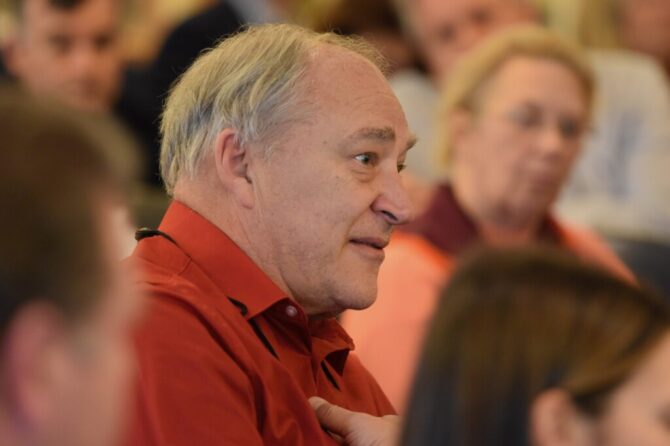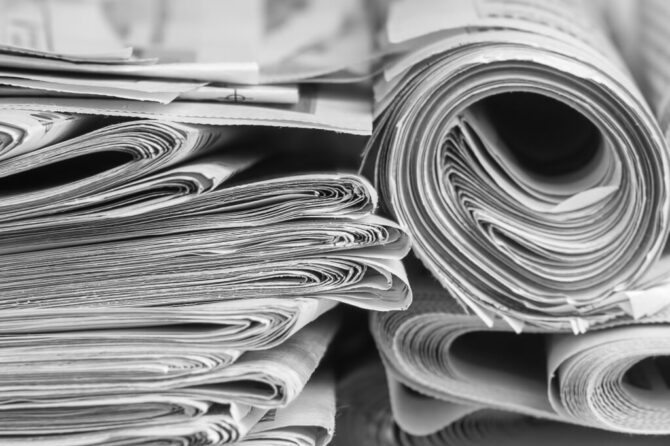Maryland voters will begin casting mail-in ballots early next month and the primary is less than 60 days away. But there is a nagging question that just about everyone in Maryland politics is asking: What’s going on in the race for governor?
The lack of independent polling has left journalists, debate planners and — most importantly — voters in the dark about the Democratic and Republican primary contests that will shape the general election in November.
A handful of candidates have released internal polls, but those are generally greeted with skepticism, even when they are conducted by highly respected partisan pollsters. Large news organizations, the traditional bankrollers of public opinion surveys, have yet to provide any, and there is no guarantee they will.
The hunger for a credible reading of the electorate is Topic A among people who follow politics here.
“(It) would be nice to see a poll on this race that isn’t by one of the candidates’ pollsters,” said Michael Ricci, a spokesman for Gov. Lawrence J. Hogan Jr. (R), who will leave office in January, because of term limits.
Josh Tulkin, executive director of the Maryland Sierra Club, took to social media this week to prod news organizations toward action.
“There is a real lack of non-partisan polls that aren’t driven by the campaigns,” Tulkin said in an interview. “The fact that we’re spending so much time trying to figure out the meaning of the freaking Western Maryland straw poll shows just how desperate people are for some indicators about the bigger picture.”
It’s an insider’s lament, for sure, repeated by people who follow and think about Maryland elections all the time. But there are also implications for average voters who may only be focusing on the July 19 primaries now — or may not do so for another several weeks.
This story is based on interviews with more than a dozen current and former elected officials, strategists from both parties, interest group leaders, journalists and debate planners, many of whom requested anonymity to discuss their views candidly.
Among them there was a strong consensus that the desire for an accurate snapshot of the electorate goes well beyond mere curiosity.
Of immediate importance, they said, is that debate organizers need to know who to include and who to leave off the stage. Decades of ratings data confirm that large debates are unwieldy and attract few viewers.
This year, 10 Democrats and four Republicans are running for governor. To justify winnowing the field at public events, organizers need independent surveys.
Interest groups that offer endorsements — like the Sierra Club and many others — often want to know who is competitive before they make decisions. Choosing someone showing support in the low single digits is almost certainly pointless.
The same thought-process holds true for many donors.
News organizations — particularly time-starved broadcasters — that want to compare the candidates’ stances on issues are effectively prevented from doing so when the sheer size of the contests is overwhelming.
And lastly, voters also benefit from public opinion surveys. While many voters never consider the horse-race aspect of a race, many would prefer to vote for a top-tier candidate, to maximize the perceived weight of their vote.
“If polling consistently shows that a candidate is not doing well and has no hope of doing well, then there’s always that possibility that — come Election Day — the folks who were going to vote for that person just stay home or they decide to vote for someone else,” said Todd Eberly, a political science professor at St. Mary’s College of Maryland.
“Unless some polling comes in, folks are going to be going into the voting booth with no clue of who’s in the lead.”
As a general rule, larger news outlets have the financial wherewithal to conduct polls, while smaller ones do not.
Steve Raabe, the owner of OpinionWorks, a firm that has conducted the Baltimore Sun/WYPR-FM/University of Baltimore survey over the past few election cycles, said he has no current plans to do a primary poll, but he stressed that that could change.
In an email, Washington Post Local Editor Mike Semel said the paper plans “two polls for the general [election] in late summer and the fall.”
Pollsters Mileah Kromer, who runs the Goucher College poll, and Patrick Gonzales, who owns a survey research and communications firm in Arnold, said they have no plans to conduct surveys in advance of July 19.
Actions offer possible clues about the races
While there are no independent surveys in public view, many campaigns have the resources to conduct research. The campaigns’ subsequent actions offer intriguing clues about these unpublished polls.
This is particularly true in the closely watched GOP primary for governor, which pits a longtime member of Hogan’s cabinet, former Commerce secretary Kelly Schulz, against Del. Dan Cox, an adherent of former President Trump.
Schulz recently announced a “high six-figure” media buy that includes a spot harshly critical of Cox.
“They have made the choice that they’re going to draw attention to him and tell people that he’s crazy,” said Eberly. “I don’t know that you do that unless you have internal numbers causing you concern.”
(A Democratic Governors Association poll in February found that rank-and-file GOP voters would be more likely to back Cox once they find out he has the former president’s backing. Some Schulz backers scoffed at that survey, though her ad buy suggests it may have been on target.)
Campaign polls on the Democratic side, taken together, suggest that Comptroller Peter V.R. Franchot has been the consistent frontrunner, with many voters still undecided. Franchot appears to be holding the lead with support around 20% of those polled, with former non-profit CEO Wes Moore, former Prince George’s County Executive Rushern L. Baker III and former U.S. Labor Secretary Tom Perez best positioned to overtake him.
After he endorsed Moore late last month, U.S. House Majority Leader Steny Hoyer (D) told Maryland Matters that Moore was the most electable.
“I happen to believe that the electability of Wes Moore exceeds all the others, and I think his chances in the general election are excellent,” said Hoyer, who has lost only one race since 1966. “So that entered into my calculation.”
Former Gov. Parris Glendening (D), also a Moore supporter, noted in an interview that Hoyer can tap premiere polling data any time he wants to.
“He has the resources and the access to so many different people who are doing all kinds of background polling, [so he has] a pretty good feel of what is happening,” Glendening said.
Supporters of other candidates won’t buy that argument, of course. But until voters make their voices heard, the true lay of the land is anyone’s guess.
This article is from Maryland Matters, to read more stories like this click here.
Photo: An early voting station at Southeast Anchor Branch Library in Baltimore during the fall of 2020. Early voting in this year’s primary begins July 7. But who’s ahead in the gubernatorial races? Photo by Elizabeth Shwe.










